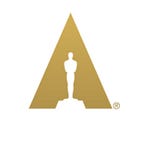The Moment Anjelica Huston Won an Oscar
And what it meant for her family
In 1986, Anjelica Huston became the third person in her family, across three generations, to receive an Oscar when she won Best Supporting Actress for her work in Prizzi’s Honor, a film directed by her father, John Huston. Years earlier, in 1949, John won awards for Directing and Screenplay for The Treasure of the Sierra Madre, about two Americans who convince a shrewd old prospector to help them mine for gold in the mountains of Mexico. Anjelica’s grandfather, Walter Huston, won Best Supporting Actor for his performance as the prospector.
“It was really a way of getting to know my grandfather,” Anjelica has said of watching The Treasure of the Sierra Madre. “It’s one of the greatest performances of all time from Walter Huston. It’s funny, it’s sharp, it’s witty.”
When her own nomination came, “one morning in February 1986,” Anjelica writes in her memoir, “I remember being very excited and nervous over the next few weeks, but the time leading up to the Academy Awards was not as fraught, it seems to me, as in the present day, when there are so many awards shows presaging the main event. I had no publicist, no manager, no stylist.”
For the dress, she turned to Tzetzi Ganev, who “was known for cutting the best pattern in Hollywood.” Huston chose a green silk, in honor of her Irish upbringing.
“The Best Supporting Actress category came up very early in the program. My name was called out by Marsha Mason and Richard Dreyfuss. From far, far away, the announcement trickled down from the stage and into my consciousness.”
“Everything went into slow motion.”
Huston made her way to the stage to accept her award for playing mafia daughter Maerose Prizzi. In her memoir, she continues, “In my delirium, I forgot to thank Jack [Nicholson] and John Foreman. I managed to thank Dad, then spontaneously ran off the front of the stage back into the audience. I didn’t go backstage with the minders to the press room but dashed back up the aisle toward my seat like a homing pigeon. I turned to see my father in the middle of the center row, tears coursing down his cheeks, and when I looked to the left, there was Jack, looking emotional. John Foreman was crying, too.
“I was electrified. I couldn’t believe it. They were all awash in tears, and I was dry as a bone.”
“Someone came and got me from my seat beside Jack and brought me backstage to the press room, where a hundred cameras flashed and the reporters yelled and gradually I returned to consciousness.”
To date, John Huston is the only filmmaker to direct both his father and daughter in Oscar‑winning performances.
Walter Huston has jokingly remarked:
“I always told my boy that if he ever became a director to find a part for his old man.”
The Coppolas are the only other family to share the rare achievement of three Oscar wins across three generations. Carmine Coppola won for Original Dramatic Score for The Godfather Part II (1974). His son, Francis Ford Coppola, has multiple Oscar wins: Original Screenplay for Patton (1970), Adapted Screenplay for The Godfather (1972), and Adapted Screenplay, Directing and Best Picture for The Godfather Part II (1974). Francis’s daughter, Sofia Coppola, won an Original Screenplay Oscar for Lost in Translation (2003).
For more stories from 90 years of Oscars, click here.
The Academy Film Archive’s John Huston collection includes more than 40 features from the writer-director’s personal film library, as well as color home movie footage, including a family vacation to the American Southwest that featured a visit to Howard Hawks’s Arizona set of “Red River” (1948). The Margaret Herrick Library’s John Huston papers feature production files, photographs and personal correspondence.
